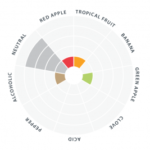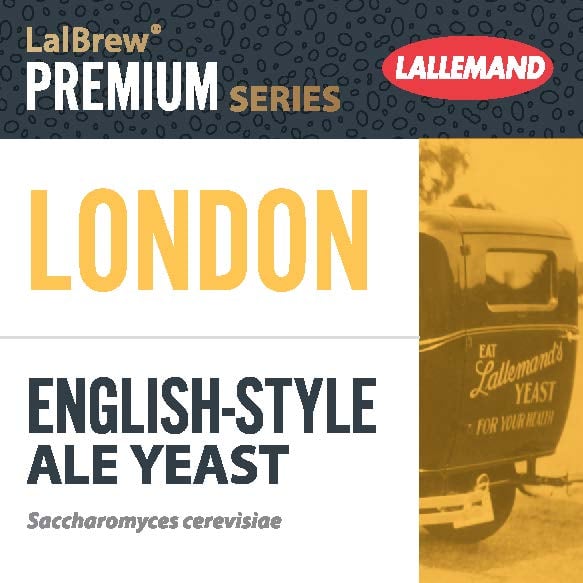Description
Discontinued by Lallemand for Home Brewing 2023
LalBrew® London is a true English ale strain selected for reliable CODE fermentation performance and moderate ester production that lets the flavors and aromas of malt and hops shine through. London was selected from the Lallemand Yeast Culture Collection, and is an excellent choice not only for brewing Extra Special Bitter but for other authentic heritage UK styles like Pale Ale, Bitter and Mild.
London may also be used in the production of Ciders
Please see PITCHING RATE CALCULATOR HERE
Pitching rate of 0.5-1g per litre is recommended. If fermenting wort at 20c and a SG of 1.050 2 sachets is recommended
Microbiological Properties
Classified as a Saccharomyces cerevisiae, a top fermenting yeast.
Typical Analysis of LalBrew London™ yeast:
- Percent solids 93% – 97%
- Living Yeast Cells ≥ 5 x 109 per gram of dry yeast
- Wild Yeast Media: This strain is known to grow on some wild yeast media including LWYM and LCSM
- Wild Yeast < 1 per 106 yeast cells
- Diastaticus Negative
- Bacteria < 1 per 106 yeast cells
Brewing Properties
In Lallemand’s Standard Conditions Wort at 20°C (68°F) LalBrew London™ yeast exhibits:
Vigorous fermentation that can be completed in 3 days
Medium attenuation and Low flocculation
Neutral to slightly fruity and estery flavor and aroma, allowing Malt aromas and flavors to shine through
This strain is POF Negative.
The optimal temperature range for LalBrew London™ yeast when producing traditional styles is 18 – 22°C (65 – 72°F)
LalBrew London™ does not utilize the sugar maltotriose (a molecule composed of 3 glucose units).
Maltotriose is present in wort in an average 10-15% of all malt worts. The result will be fuller body and residual sweetness in beer. Be advised to adjust gravities and mash temperatures according
to desired result.
Fermentation rate, fermentation time and degree of attenuation are dependent on inoculation density, yeast handling, fermentation temperature and nutritional quality of the wort.




Stephen Pratt (verified owner) –
In my opinion, it produces a perfect English Bitter. It has that strange “damp soil” sort of taste that you associate with English Bitter. The reason it gets only 4 stars from me is because (in my experience, with 4 attempts) it achieves only 50-55% attenuation, and that is not, in my opinion, “medium” attenuation. I brewed 5 US gallons (19 litres) of bitter with 3.25kg of base malt (and about 500g of crystal etc.), and got a 2.9% ABV beer… but such a lot of taste at that low strength! At this level of attenuation you get a sweet beer as well, so would surely be excellent for a dark mild as well.
Martin Crossley (verified owner) –
Low flocculation – seems to like just hanging around the bottom of the FV in a big cloud.
Attenuation was OK: 67% with a 65ºC mash in a Brown Ale.
Note that it finishes a little bit higher than usual due to this strain’s inability to metabolise maltotriose.
I normally use liquid yeasts but I made an exception this time for convenience sake and I’m perfectly happy with the results.